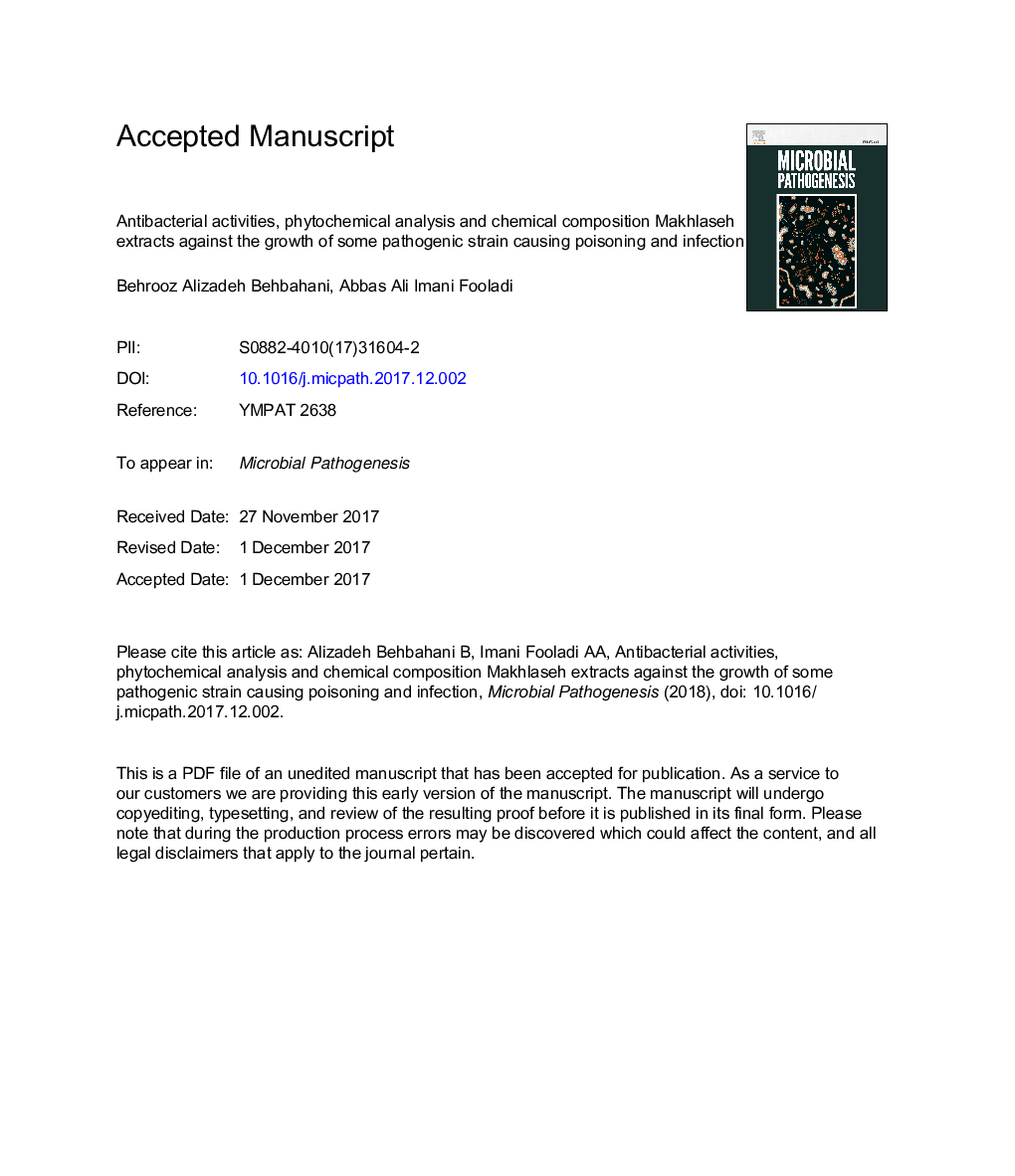| Article ID | Journal | Published Year | Pages | File Type |
|---|---|---|---|---|
| 8749879 | Microbial Pathogenesis | 2018 | 22 Pages |
Abstract
The aim of this study was to investigate the antibacterial activities and phytochemical analysis of extracts against the growth of some pathogenic strain causing poisoning and infection (Staphylococcus aureus, Streptococcus pyogenes, Staphylococcus epidermidis, Enterobacter aerogenes, Escherichia coli and Shigella flexneri). Makhlaseh components were identified via gas chromatography/mass spectrometry (GC/MS). Total phenolic content (TPC), alkaloids, tannins and saponins were determined. Antioxidant activity was determined calorimetrically for 2,2-diphenyl-1-picrylhydrazyl (DPPH) scavenging activity. Antimicrobial effect of extracts was evaluated by five methods, pour plate, well diffusion, disk diffusion, minimum inhibitory concentration (MIC), and minimum bactericidal concentration (MBC). Camphor was the major compound of Makhlaseh. The TPC of aqueous and ethanolic Makhlaseh extracts was equal to 79.45 ± 1.15 and 115.26 ± 1.23 μg GAE/mg, respectively. The antioxidant activity (IC50) test of aqueous and ethanolic Makhlaseh extracts showed 315.50 ± 1.12 and 118.35 ± 1.08 μg/ml, respectively. MIC of the aqueous extract of Makhlaseh for Enterobacter aerogenes, Escherichia coli, Shigella flexneri, Staphylococcus aureus, Staphylococcus epidermidis and Streptococcus pyogenes were 32, 32, 16, 16, 8 and 8 mg/ml, respectively, and the MIC of the ethanolic extract were 16, 16, 16, 8, 4, and 4 mg/ml, respectively. The MBCs of the Makhlaseh extracts varied from 4 mg/ml to 128 mg/ml. Increasing concentration of Makhlaseh extracts had a significant effect (p â¤Â 0.05) on inhibition zone diameter. In conclusion, using Makhlaseh extracts as a natural antibacterial composite in vitro have significant antibacterial ability over the studied strains.
Related Topics
Life Sciences
Immunology and Microbiology
Microbiology
Authors
Behrooz Alizadeh Behbahani, Abbas Ali Imani Fooladi,
